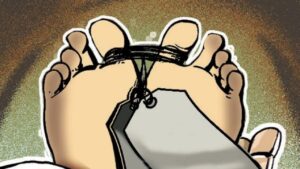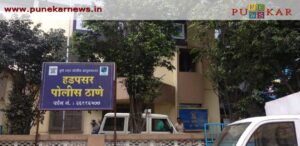Pune’s Waste Management Challenge: A Call for Circular Design Solutions
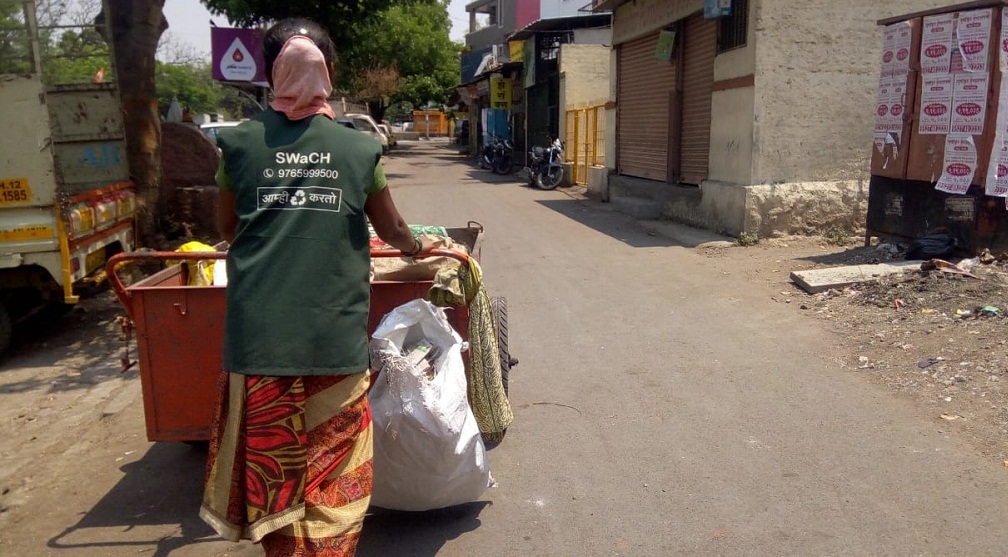
Aditi Deodhar
Pune: Garbage in the city, by the roadside, and in the rivers is not the problem but a symptom of the problem. It is an indication that something is wrong. The challenge of waste is not a new one. It started a while back its effects are becoming apparent now. It was the year 1997. Captain Charles Moore aboard his boat named Algalita. He had just finished a boat race on the Hawaii islands and was on the way home to California. Instead of the regular route, he decided to traverse a longer path.
This area of the Pacific Ocean is called a desert for the lack of fish in the area. The ocean currents do not make sailing a great experience either. It certainly is not a favorite spot for the vessels. The team traveled for a week without sighting any other boat. Third day onwards however they began to see plastic waste in the water, a bottle lid here, a broken seal there.
Eventually, the frequency increased and what they chanced upon on the seventh day of the travel shocked them. It was like an island, an island comprised of garbage. It was huge. It was the size of four Maharashtra states combined. Moore named it the ‘great Pacific garbage patch’.
Who dumped so much garbage here, wondered Charles Moore. How come the area completely devoid of vessels has such a huge garbage island? He assumed it might be the garbage dumped by the naval vessels. He could not take that sight out of his mind. After two years, he returned fully equipped, with a team of scientists. They collected samples. Most of the garbage was plastic waste.
A study of samples revealed that almost 80% of the garbage was discarded as waste on the land. The garbage had traveled here through the streams, rivers, and ultimately the ocean currents. Such garbage patches exist not only in the Pacific Ocean but everywhere. So much garbage in our oceans? How? Why?
Humans are not the only ones who utilize materials. Birds build nests using twigs, leaves, grass blades, and cotton. Sea creatures use Calcium carbonate to make protective shells around themselves. Plants harness Carbon dioxide from the atmosphere for photosynthesis. However, we are the only ones who cause pollution. There are two factors to consider, material type and material quantity. Birds build a nest, lay eggs, eggs hatch, the chicks learn to fly and the brood goes away one day, leaving behind the nest. The abandoned nest withers with rain and wind, falls to the ground and returns to the soil leaving no trace. A peak into our past reveals a similar story.
We are not born with sharp nails and teeth. We devised tools to pluck fruits, dig out tubers, and hunt. The tools were made of stone, bones, or wood. The broken, discarded wooden or bone tool is used to decompose and return to the soil. The stone would continue withering and someday would become soil. With the onset of the metal age, things did not change much since all metals are recyclable. A metal tool can be melted and converted into a new tool or artifact creating no waste. The industrial revolution was the game changer. Machines increased our productivity by a multitude.
We engineered various new materials that nature does not have a mechanism to process. They do not decompose in nature but continue piling up as garbage. Back in the 18th century, at the time of the Industrial Revolution, it did not seem a challenge. Earth was too large, the oceans too vast to have any impact of our actions. However, our capacity to impact nature increased every decade.
Today all the municipalities in the world are grappling with the waste management challenge. Pune city faced many challenges; the city was invaded, and it was destroyed and rebuilt. The city that stood up to those challenges with a brave face now seems to be buckling under the ever-increasing waste. What would be the situation a few years down the line?
About Mission City Chakra
Instead of creating waste and finding various ways to manage it; how about minimizing the waste generation itself? Mission City Chakra project began with this same objective with the vision of ‘A Clean and Healthy City by DESIGN’. It is a project by the Centre for Sustainable Development under the Gokhale Institute of Politics and Economics. A leaf falls off the tree, decomposes, and returns nutrients to the soil. That’s the circular design in nature. A forest is a complex ecosystem with a multitude of processes yet no waste. In a circular design, the output of a process serves as an input to some other process. We can design similar systems in nature so that nothing goes to waste.
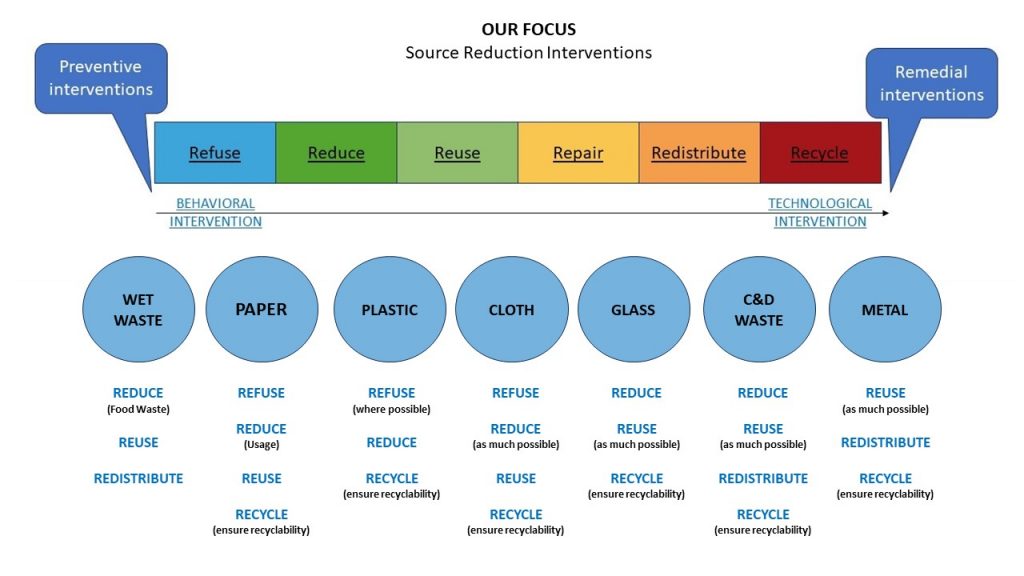
We are all Policy Makers
How to design these systems? How to bring about this huge change? Do we, the common citizens have that kind of power? We believe we are all policymakers. We decide what to buy, and what not to buy on the household level. A school principal is a more powerful policy maker with the ability to nudge hundreds of students and their parents towards a desired positive behavior. A corporate office administrator can have an impact on thousands of employees. We decided to work with the school principals in the first phase of the project to give a clean and healthy city to the children and also to have healthy future citizens for the city.
Mission City Chakra – Schools
Children eat from plastic tiffin boxes and drink water from plastic water bottles from the age of five to fifteen. Imagine the impact on their health through additives in plastic and on the environment when the tiffins and bottles are discarded. Our appeal to the school principals is to Make steel tiffin boxes and steel bottles compulsory for the students taking new admission in the year 2024-25, thus blocking the plastic at the entry point. Ban plastic or laminated paper covers for the textbooks starting from the year 2024-25. Make a rule for existing students to go for steel tiffin and bottle when it is time to replace their existing plastic ones. In the next 2-3 years, these plastic products will be completely phased out from the schools reducing waste generation, and preventing negative health and environmental impact. Currently, we have 200 schools in our program. We aim to reach all 1200 schools in the city.
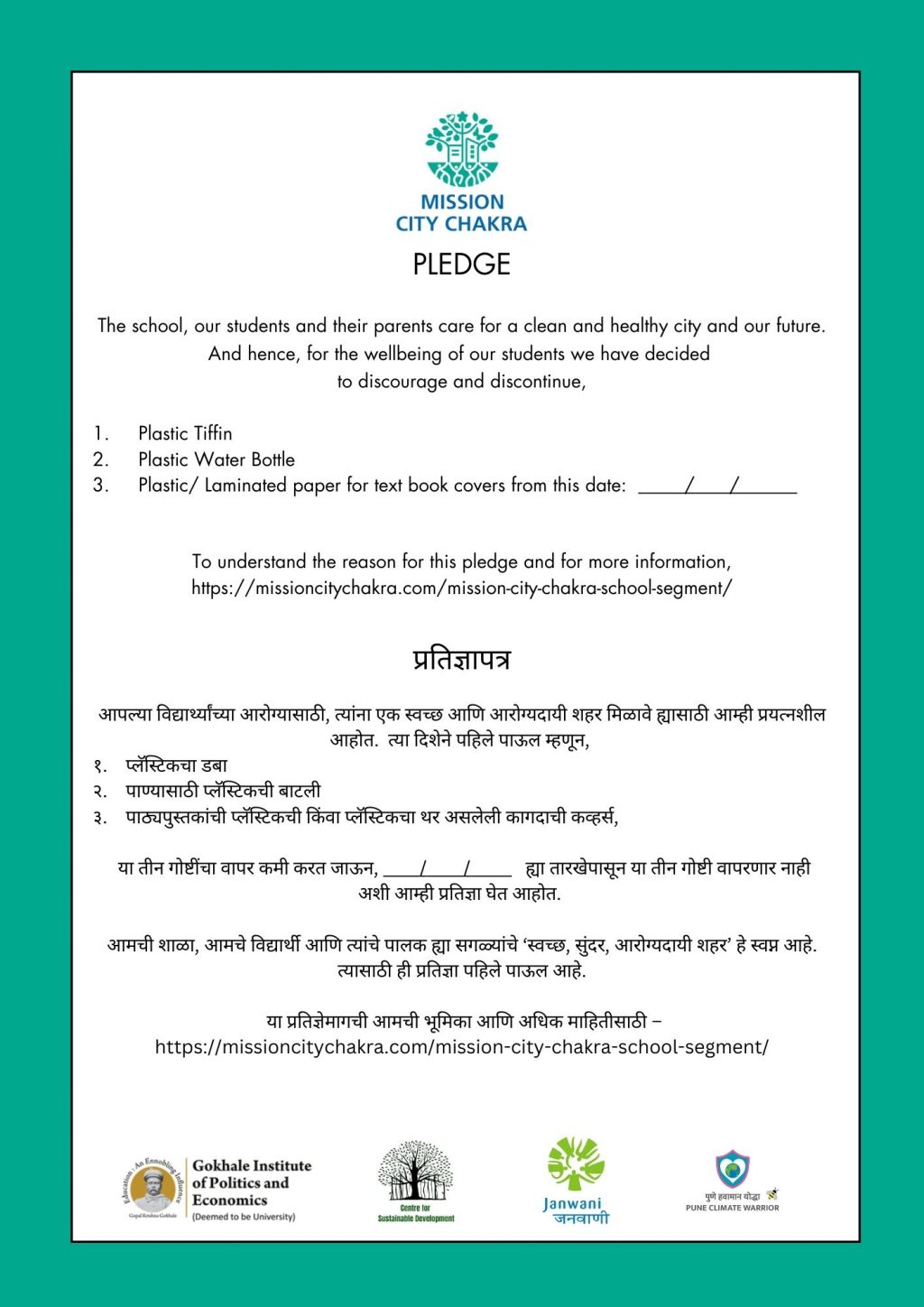
Mission City Chakra – Corporate
If a person uses paper cups for tea every day in the office, then it is 2 cups a day, 10 cups a week, 40 cups a month, and 480 cups a year. If the office has 100 employees, then it is 48,000 paper cup waste in a year. For 1000 employees, it is 4,80,000, and for 10,000 employees, it is 48,00,000 in a year. A shift from paper cups to steel cups eliminates waste in an instant. A corporate office administrator can bring about such a huge positive impact. We have begun working with the corporate office administrators to make offices zero-waste in their non-production units. The next phase will be housing societies, hotels, restaurants, and event managers.
(Aditi Deodhar is Project Lead – Mission City Chakra, Founder Director – Jeevitnadi – Living River Foundation and Founder – Brown Leaf Forum. If you wish to participate in the program, contact at [email protected])


